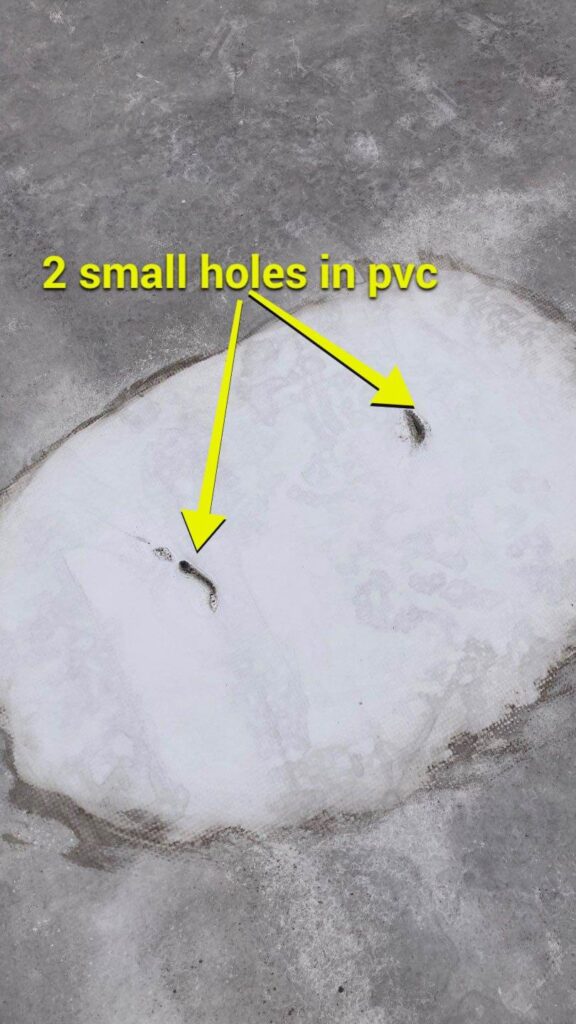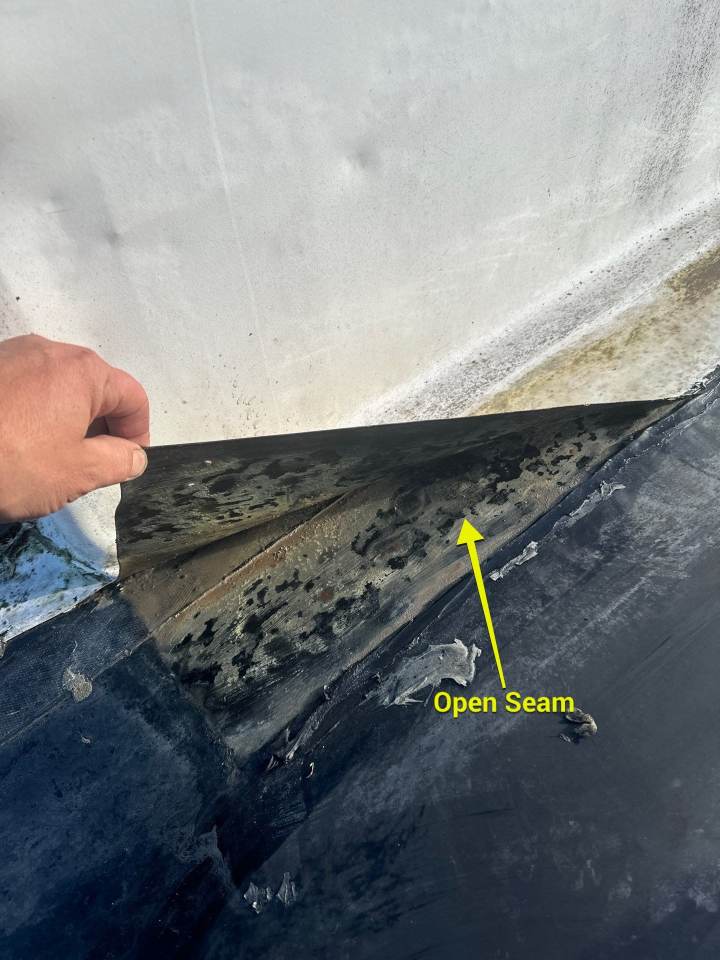- By admin
- Roofing Harrisburg, PA
- 0 Comment
Flat roofs, while offering a sleek and versatile roofing solution, are not without their share of challenges. These structures are particularly susceptible to certain issues that, if not promptly addressed, can lead to significant damage and costly repairs. Among the myriad of problems that can afflict flat roofs, three stand out due to their common occurrence and potential impact on the roof’s integrity and functionality.
These issues are 1. Ponding water, which can weaken the roof structure over time; 2. Tears in the seams or punctures in the membrane, which compromise the roof’s waterproofing abilities; and 3. Damaged flashing, which can lead to leaks and structural damage. Understanding these common problems is the first step towards effective prevention and maintenance, ensuring that your flat roof continues to perform its essential role of protecting your building from the elements. So take a few minutes with us and we’ll explain each situation a bit more in depth
Ponding Water
Ponding water on a flat roof is a common, yet significant issue that occurs when water accumulates and stagnates on the roof surface for (generally) more than 48 hours. This can happen due to inadequate drainage systems, poor roof design, or other issues related to the roof’s construction or the building’s foundation. The consequences of ponding water are numerous, affecting not only the roof’s structural integrity but also leading to potential internal leaks, insulation damage, and the growth of algae and vegetation that can harm the roof membrane.
There are several reasons why ponding water accumulates and a huge culprit of that is the minimal slope of a ‘flat’ roof. Due to the minimal slope you can understand that any slight disruption in the slope by say, the underlying construction of the building or roofing structure itself could create ponding. Small disruptions in the slope will create situations that don’t allow for adequate water movement to drainage systems. Additionally, compressed insulatoin beneath the roof surface can cause uneven areas, further contributing to ponding water issues.
To address and prevent ponding water, professionals often recommend a variety of solutions. These may include ensuring proper roof design to promote effective drainage, maintaining and cleaning drainage systems to prevent clogs, and using tapered insulation to create a slight slope and direct water towards drains. In cases where structural deflection or compressed insulation is a problem, solutions like spray-in-place polyurethane foam (such as GacoRoofFoam) can be applied to correct deflections and improve surface elevation, ensuring water flows away from the roof surface. Protective coatings may also be applied over insulation foam to protect the roof and improve energy efficiency by adding reflectivity.
For persistent ponding water issues, it may be necessary to consider more extensive measures such as partial or full roof replacement, adding additional drains, or installing scupper boxes to enhance roof drainage. Consulting with a professional roofing contractor is crucial to assess the specific causes of ponding water on a roof and determine the most effective solutions tailored to the building’s needs

Small holes or tears in the membrane can lead to larger issues that metastasize into internal building damage
Tears in the Seams and Punctures in the Membrane
Tears in the seams or punctures in the membrane of flat roofs are common issues that can lead to significant problems if not addressed promptly. These issues primarily arise from physical damage due to various factors, including foot traffic, sharp objects, such as falling branches, or maintenance activities that can stress or damage the roof membrane. Additionally, animals can contribute to punctures by scratching or pecking at the roof surface, and severe weather conditions, such as hail or heavy debris carried by strong winds, can also cause punctures or tears.
To prevent punctures, it’s recommended to use thicker, multiple-ply membranes that offer greater durability and resistance to physical damage. Walkway pads can be strategically placed around mechanical equipment and along pathways used by maintenance personnel to minimize direct contact with the roof membrane. Educating maintenance crews on the importance of careful tool handling and movement on the roof can further reduce the risk of damage.
When punctures or tears do occur, immediate action is required to avoid further damage or leaks. Small punctures can often be repaired with sealant or membrane patches, while larger damages might need more extensive repairs, such as welding new membrane material over the damaged area or applying patches made of compatible roofing material. The repair process typically involves cleaning the affected area with a solvent to ensure proper adhesion of the new material.
It’s crucial to address damaged roofing materials as soon as possible to prolong the roof’s longevity. Regular roof inspections can help identify potential issues early, allowing for timely repairs that prevent minor damage from becoming major problems. Professional roofing contractors are best equipped to assess the damage and perform the necessary repairs, ensuring the roof remains in good condition and continues to protect the building effectively.

Damaged Flashing
Damaged flashing on flat roofs is a prevalent problem that can lead to leaks and significant damage if not addressed promptly. Flashing serves as a critical component in roofing systems, designed to seal and protect the edges of the roof, as well as areas where the roof surface meets projections like vents, pipes, and HVAC units. These areas are particularly vulnerable to water ingress due to their potential to trap water or direct it into seams and joints.
The causes of damaged flashing range from improper installation, to age-related wear and tear, to mechanical damage from storms or maintenance activities. Over time, flashing can corrode, become loose, or crack, thereby compromising its ability to keep water out. In particular, metal flashing can be susceptible to rust and corrosion, while plastic or rubber flashing might degrade due to UV exposure or physical impacts.
Repairing damaged flashing often involves assessing the extent of the damage to determine the most effective solution. Minor issues might be addressed with sealant or patches, while more significant problems may require replacing sections of the flashing. Ensuring that flashing is correctly installed and adequately sealed is crucial to prevent future leaks. This might include using appropriate materials that are compatible with the existing roof system, securing flashing firmly in place to withstand high winds, and applying sealants that can flex with temperature changes and building movements without cracking.
Regular roof inspections can help identify damaged flashing early, before water damage occurs. During these inspections, it’s important to check not only the condition of the flashing but also the surrounding roofing materials, as damaged flashing can lead to further degradation of the roof membrane and underlying structures. If damage is found, consulting with a professional roofing contractor is recommended to ensure that repairs are made correctly and in line with best practices for flat roofing systems.
Overall, maintaining the integrity of roof flashing is essential for the longevity and performance of flat roofs. Proactive maintenance and timely repairs can prevent minor issues from becoming major, costly problems, ensuring that the roof continues to provide adequate protection against the elements.
Harrisburg, PA Flat Roof Repair and Maintenance
We’ve covered the three main issues that seem to constantly plague flat roofing systems. Careful inspections and maintenance programs are always the best way to combat these kind of ordeals. If you are local to Harrisburg, PA and the surrounding tri-state area (New Jersey, Delaware, Maryland) and you’d like more information about the issues stated in this article or would like to setup an appointment to speak with a professional roofing contractor, give J Smucker Contracting a call!

